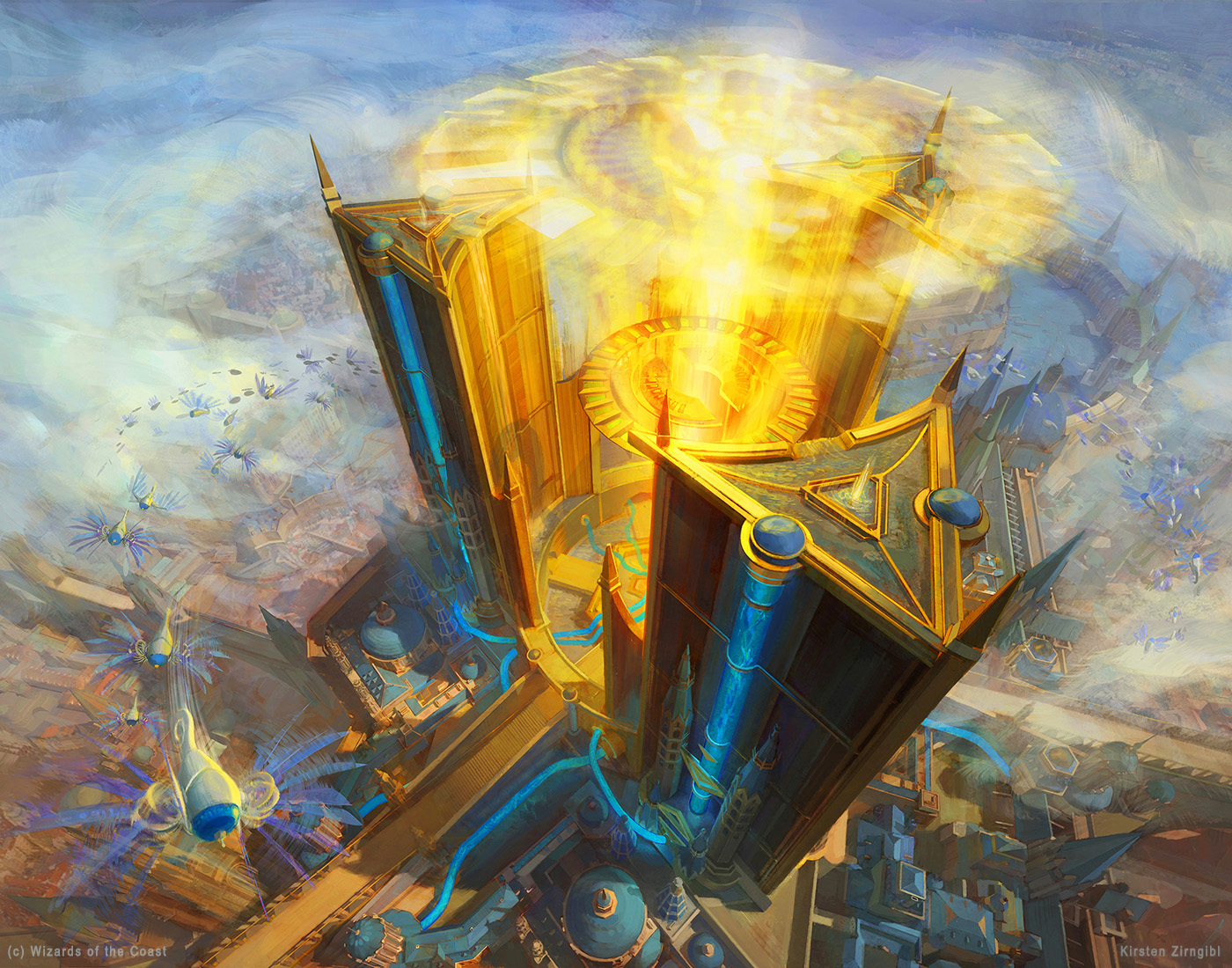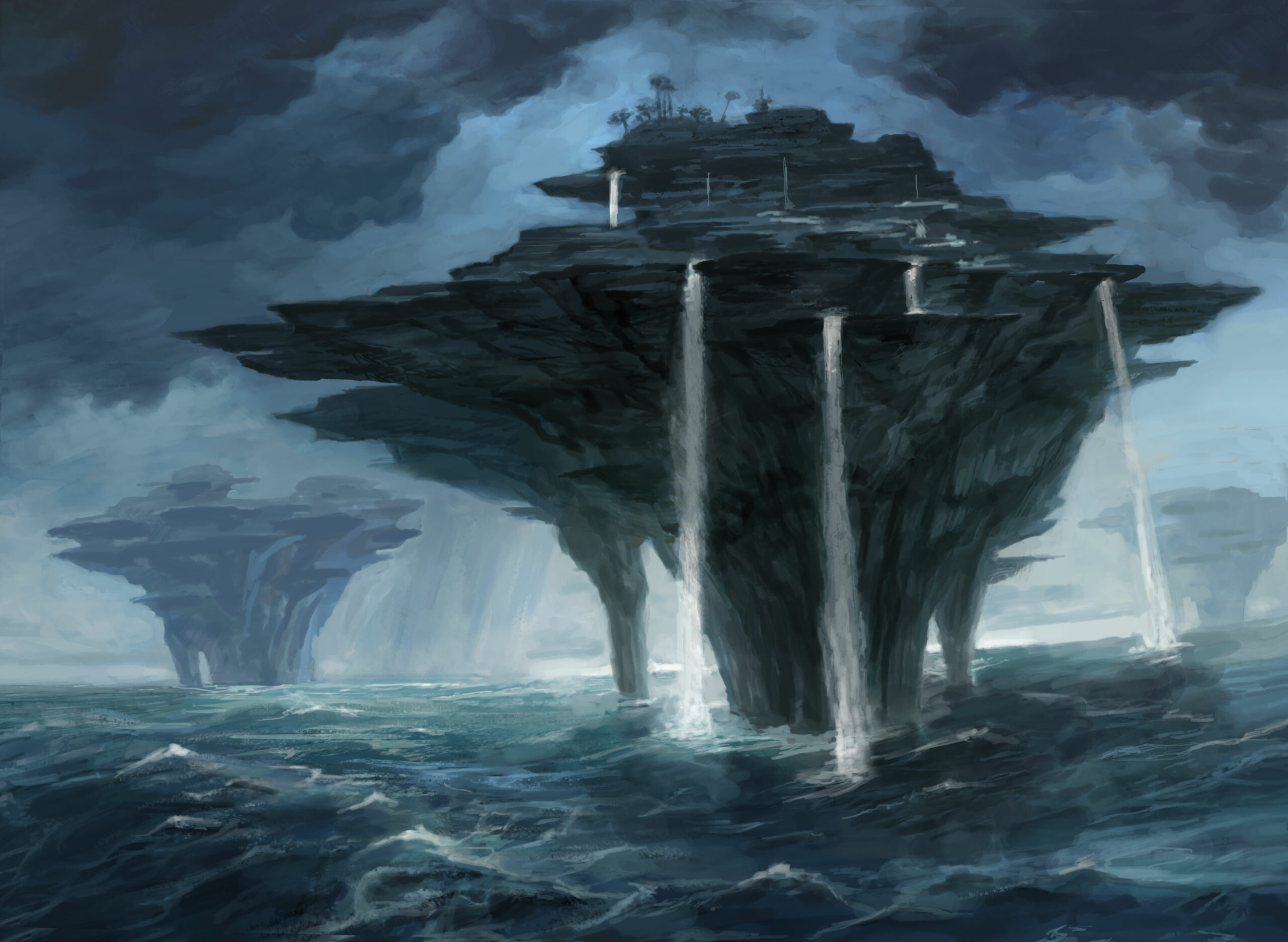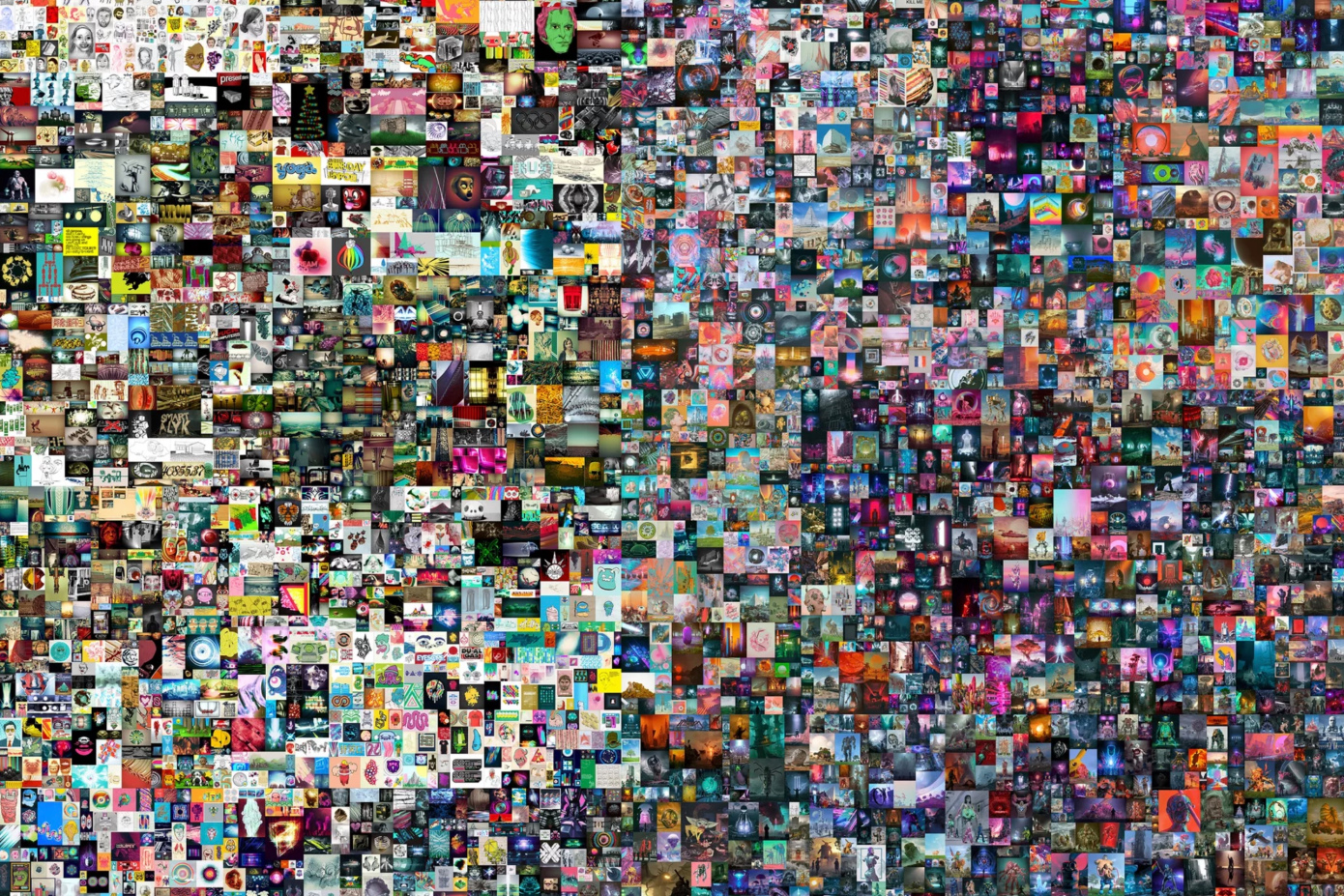The first two NFTs, or non-fungible tokens, of Magic: the Gathering artwork were minted within hours of one another by their original artists yesterday. The first illustration, announced on Twitter, was the War of the Spark Island by Kirsten Zirngibl, which Magic art’s entrance into the market of increasingly eye-popping NFT sales. Zirngibl subsequently de-listed the piece until Wizards of the Coast makes an official statement on NFTs.

Island by Kirsten Zirngibl. Digital.
It was listed on the trading platform Foundation with an opening bid and reserve of 20.00 ETH (Etherium), a digital cryptocurrency. The amount is equivalent to just under $35,000 USD at the time of writing.
Minutes later, another Island—this one the Magic 2012 Island by Peter Mohrbacher—was also announced on Twitter.
UPDATE: Mohrbacher also de-listed his NFT this morning.

Island by Peter Mohrbacher. Digital.
It was also posted to Foundation with the same opening bid and reserve of 20.00 ETH.
Once the opening bid and reserve is met, a 24 hour auction begins. At the end of the 24 hours, the work is sold to the highest bidder and recorded in a digital ledger known as the Blockchain. These are both one-of-one works, never to be minted again, and once recorded can be held, sold, or traded in perpetuity. However, the owner of an NFT does not acquire the copyright to the image nor the “original” digital file.
Wizards of the Coast, a subsidiary of Hasbro, Inc (NYSE:HAS), owns the copyright to these images and has yet to make a statement on these offerings or the ability for artists to create NFTs of artwork commissioned for the game. In the past, artist contracts include the ability to sell an original work, as well as prints of an artwork they create for Magic. It is not currently clear whether that extends to digital artworks to be sold as NFTs.
Some companies are taking a stand against artists utilizing NFTs. Last week, a leaked letter online detailed DC Comics stance on NFTs, specifically saying that use of their intellectual property would not be permitted by artists working on their properties.
Kirsten Zirngibl’s last card for Magic came out in Spring 2020, while Mohrbacher stopped working for the game in 2014. In 2015, he wrote an article about the pay of Magic: the Gathering artists, which created considerable conversation within the larger community. Although he has not created any new artwork for Magic since, his work is still frequently reprinted within the product line.
NFT minting has surged in recent weeks, and especially since the March 11 sale of Everydays—The First 5000 Days by Mike Winklemann, an artist known as Beeple, who sold the digital collage through Christie’s auction house for more than $69 million. It’s the third-highest price realized for a living artist.

Everydays—The First 5000 Days by Beeple. Digital.
The topic of NFTs has continued to divide artists on social media. Concerns over the environmental impact of the Blockchain and cryptocurrency mining, art theft, and copyright infringement are just a handful of the conversations that have left artists on either side of the new technology.
Stay tuned for updates regarding future Magic: the Gathering NFTs and any response from Wizards of the Coast.

